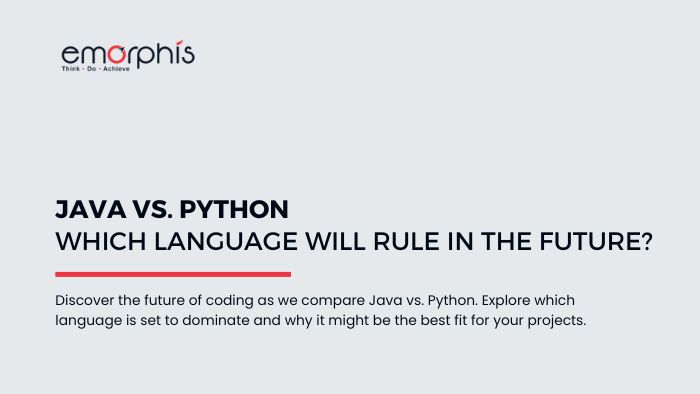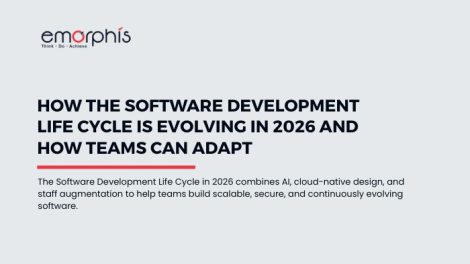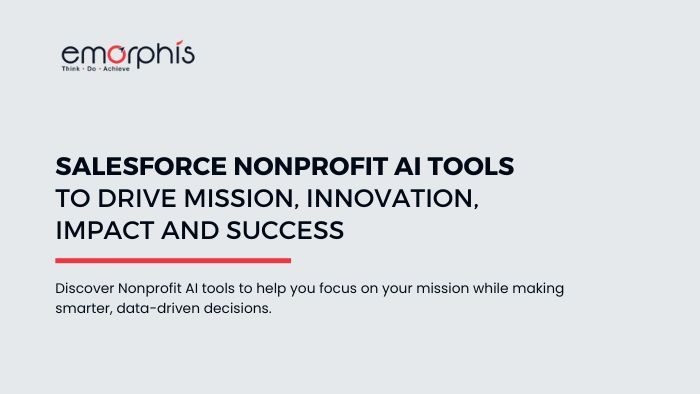Overview
In the dynamic realm of software development, selecting the right programming language can be a game-changer. Imagine Python and Java as the titans of the programming world, each wielding its own set of strengths and specialties. In the ever-evolving landscape of software development, choosing between Java vs Python can feel like picking a champion in a high-stakes showdown. This article delves into the Java vs Python face-off, providing a thorough analysis of their respective features, advantages, and ideal applications.

Curious to see which language will take the crown? Whether your preference leans towards Python’s elegant simplicity or Java’s robust performance, our in-depth comparison of Java vs Python will offer you the insights needed to make an informed choice. By the end, you’ll have a detailed understanding of which language stands out as the best fit for your project’s needs.
Purpose of the Comparison
Deciding between Java vs Python is more than just a technical choice—it’s a strategic decision that can shape the success of your projects. With both languages offering distinct advantages, understanding how they stack up against each other is crucial.
Are you weighing performance against ease of use? Curious about how each language fits into different application domains? Or perhaps you’re looking for insights on how developer preferences might sway your choice?
In this comparison, we’ll dive into these critical factors, unraveling the strengths and limitations of Java and Python. Our aim is to provide a dynamic and detailed analysis that will empower you—whether you’re a developer, project manager, or decision-maker—to make an informed choice that aligns with your project needs and goals. Let’s explore how each language can be your best ally or a potential hurdle in achieving your objectives.
Java vs Python – Key Statistics That Highlight Their Impact and Dominance
Java Statistics
Popularity:
- TIOBE Index: Java consistently ranks among the top 3 languages, reflecting its widespread use and popularity.
- Redmonk Ranking: Java regularly features in the top 5, based on GitHub and Stack Overflow activity.
Usage:
- Enterprise Applications: Around 90% of Fortune 500 companies rely on Java for their enterprise solutions due to its stability and scalability.
- Android Development: Java is utilized in about 60% of Android applications, maintaining its significant role despite Kotlin’s rise.
Development:
- JVM Ecosystem: Java applications run on over 1.5 billion devices globally, thanks to the Java Virtual Machine (JVM).
- OpenJDK: The OpenJDK project includes more than 250 contributors, highlighting a robust development community.
Performance:
- Speed: Java’s Just-In-Time (JIT) compiler enhances runtime performance, competing closely with languages like C++.
- Memory Management: Java’s garbage collection system effectively manages memory for large-scale applications.
Community and Support:
- Libraries and Frameworks: Java supports a vast array of libraries and frameworks, such as Spring and Hibernate.
- Developer Community: Java has a large, active community with extensive forums and resources for support.
Python Statistics
Popularity:
- TIOBE Index: Python often holds a top 3 position, reflecting its growing popularity and use across various fields.
- Redmonk Ranking: Python frequently appears at the top of the list, indicating high activity on GitHub and Stack Overflow.
Usage:
- Data Science and Machine Learning: Python is the language of choice for data science and ML, with over 60% of data scientists using it for their work.
- Web Development: Python is widely used in web development, with frameworks like Django and Flask driving its adoption.
Development:
- Libraries and Frameworks: Python boasts over 300,000 packages available through the Python Package Index (PyPI), offering extensive functionality.
- Community Contributions: Python’s open-source nature is supported by a vibrant community of over 20,000 contributors on various projects.
Performance:
- Speed: While Python is generally slower than Java due to its interpreted nature, performance enhancements are achieved through tools like PyPy and Cython.
- Ease of Use: Python’s simplicity and readability contribute to faster development times, often making up for slower execution speed.
Community and Support:
- Educational Use: Python is the primary language taught in many introductory programming courses worldwide due to its ease of learning.
- Developer Community: Python’s community includes numerous forums, user groups, and conferences, fostering collaboration and support.
Understanding Java
What is Java?
Java is an object-oriented, high-level programming language developed by Sun Microsystems (now Oracle) in the mid-1990s. It was designed with the principle of “write once, run anywhere” (WORA), meaning that Java code can be executed on any device that has a compatible Java Virtual Machine (JVM). This platform independence has been a key factor in Java’s widespread adoption.
Features of Java
- Object-Oriented: Java’s object-oriented nature promotes code reusability, modularity, and a clear structure. This approach allows developers to create reusable code components, which can simplify maintenance and enhance collaboration.
- Platform Independence: Java’s WORA capability is achieved through the JVM, which interprets compiled Java bytecode and executes it on any platform. This feature eliminates the need for platform-specific adaptations, making Java a versatile choice for cross-platform applications.
- Strongly Typed: Java is a statically typed language, meaning that variable types are defined at compile-time. In fact, this strong typing helps catch errors early in the development process, reducing the likelihood of runtime errors and improving code reliability.
Advantages of Java
- Performance: Java’s compiled nature and optimization by the JVM contribute to superior performance, especially for large-scale applications. Moreover, Java’s performance benefits are evident in enterprise environments where efficiency and scalability are critical.
- Robust Ecosystem: Java boasts a mature ecosystem with a wide range of libraries, frameworks, and tools. Additionally, Java’s extensive support for enterprise-level features makes it a preferred choice for building complex applications and systems.
Disadvantages of Java
- Verbosity: Java’s syntax can be verbose, requiring more lines of code compared to some other languages. Additionally, this verbosity can slow down development and make the codebase more cumbersome to manage.
- Memory Consumption: Java applications can consume more memory compared to some other languages due to the JVM’s overhead and the use of objects. Moreover, memory management, while efficient, can still lead to higher memory usage in certain scenarios.
Ideal Use Cases for Java
Java is particularly well-suited for building large-scale enterprise applications, Android apps, and complex backend systems. Moreover, its robust performance and scalability make it a preferred choice for applications requiring high reliability and efficiency.
Understanding Python
What is Python?
Python is a high-level, interpreted programming language created by Guido van Rossum in the late 1980s. Known for its readability and simplicity, Python emphasizes code clarity and developer productivity. Its ease of use has made it a popular choice for various applications, from web development to scientific computing.
Features of Python
- Readable Syntax: Python’s syntax is designed to be clear and concise, promoting readability and maintainability. In fact, this emphasis on readability helps developers write clean, understandable code, which is particularly beneficial for collaborative projects.
- Dynamic Typing: Python uses dynamic typing, allowing variable types to be determined at runtime. Moreover, this flexibility facilitates rapid development and prototyping, as developers can write code more quickly without worrying about type constraints.
- Extensive Libraries: Python has a rich set of libraries for various applications, including data science, web development, and automation. Additionally, the availability of these libraries accelerates development and reduces the need to build functionalities from scratch.
Advantages of Python
- Ease of Learning: Python’s straightforward syntax and gentle learning curve make it an ideal language for beginners. Moreover, its simplicity allows new developers to quickly grasp programming concepts and start building applications.
- Versatility: Python’s versatility is evident in its widespread use across different domains, including web development, data science, machine learning, and scripting. Additionally, its extensive libraries and frameworks enhance its adaptability to various use cases.
Disadvantages of Python
- Performance: Python’s interpreted nature results in slower execution speeds compared to compiled languages like Java. Furthermore, the Global Interpreter Lock (GIL) in CPython can limit performance in multi-threaded applications, impacting scalability.
- Dynamic Typing Overhead: While dynamic typing provides flexibility, it can also lead to runtime errors and make debugging more challenging. Additionally, the lack of static-type checks can sometimes result in less predictable behavior.
Ideal Use Cases for Python
Python is widely used in data science, machine learning, web development, and scripting tasks. Moreover, its ease of use and extensive library support make it a popular choice for rapid prototyping and development in various fields.
Comparative Analysis – Java vs Python
1. Performance Comparison
When comparing Java vs Python in terms of performance, Java generally holds the edge due to its static typing and the optimization capabilities of the JVM. In fact, Java’s performance is particularly advantageous in applications requiring high computational power and efficiency, such as financial trading systems or large-scale data processing.
2. Development Ecosystem
Both languages offer robust development ecosystems. Java’s mature libraries and frameworks, such as Spring and Hibernate, are well-suited for building enterprise-level applications. Conversely, Python’s extensive libraries and frameworks, such as Django and Flask, enhance productivity in web development and data science. Moreover, Python’s ecosystem includes powerful tools for machine learning and scientific computing.
3. Community and Support
Both Java and Python have large, active communities. Additionally, Python’s community is known for its open-source contributions and innovation, with numerous libraries and tools developed by community members. Java’s community is extensive in enterprise settings, providing strong support for large-scale projects and professional development.
4. Ease of Learning and Use
Python is often favored by beginners due to its clear and readable syntax. Conversely, Java’s structured approach and static typing provide a strong foundation for developing complex applications and systems. Furthermore, Python’s dynamic nature can simplify development for certain projects, while Java’s rigid structure offers advantages in maintaining large codebases.
5. Application Domains
Java excels in enterprise environments and Android app development, where performance and scalability are crucial. On the other hand, Python is highly effective in data science, machine learning, and rapid application development due to its simplicity and extensive library support. Additionally, Python’s versatility makes it a valuable tool for a wide range of applications.
6. Scalability and Maintenance
Java’s strong typing and robust framework support contribute to its scalability and ease of maintenance. In fact, Java’s static typing helps catch errors at compile time, making it easier to manage large codebases and ensure consistency across the application. Moreover, Java’s mature ecosystem includes tools and frameworks designed for scalability, such as Spring Boot for microservices and enterprise applications.
Python, while versatile and easy to use, can face challenges related to scalability and maintenance. Furthermore, Python’s dynamic typing, although flexible, can lead to runtime errors and make large codebases harder to manage. Additionally, while Python’s extensive libraries and frameworks (like Django and Flask) support rapid development, ensuring performance and scalability in large-scale applications can require careful architectural planning and optimization.
7. Integration Capabilities
Both Java and Python offer extensive integration capabilities, but their approaches differ.
- Java Integration: Java’s enterprise-oriented design makes it highly compatible with various systems and technologies. In fact, Java is often used in conjunction with other enterprise technologies and services, such as messaging systems (e.g., JMS), databases (e.g., JDBC), and web services (e.g., SOAP, REST). Moreover, Java’s strong support for APIs and frameworks enhances its integration capabilities in complex environments.
- Python Integration: Python’s flexibility and the abundance of third-party libraries facilitate easy integration with various systems and services. Additionally, Python excels in integrating with data science tools and technologies, making it a popular choice for applications involving data analysis and machine learning. Furthermore, Python’s compatibility with APIs and its support for multiple data formats (e.g., JSON, XML) simplify integration with external systems.
A quick read – find the details on Top Cloud Solution Provider – AWS vs. Azure vs. Google Cloud Platform
Comparison Table – Java vs. Python
Here’s a comparative overview of Java vs Python in various aspects:
| Feature | Java | Python |
| Performance | Generally faster due to static typing and JVM optimization | Slower due to interpreted nature and GIL |
| Typing | Static and strongly typed | Dynamic and weakly typed |
| Ease of Learning | More complex syntax, steeper learning curve | Simple and readable syntax, easier for beginners |
| Community Support | Extensive, particularly in enterprise settings | Active and diverse, strong support in data science |
| Libraries and Frameworks | Extensive for enterprise and Android apps | Rich in data science, web development, and scripting |
| Memory Management | Efficient with JVM’s garbage collection | Can be less efficient due to dynamic typing and GIL |
| Scalability | Highly scalable for large applications | Scalable with careful architecture and optimization |
| Integration | Strong support for enterprise technologies | Excellent for integrating with data tools and services |
| Development Speed | Slower due to verbosity | Faster due to simplicity and readability |
| Application Domains | Enterprise apps, Android, large-scale systems | Data science, web development, scripting |
Java vs. Python – Which One is Better and to Choose?
Choosing between Java vs Python depends on your specific needs, project requirements, and personal or team preferences.
Use Cases
- Java: If you are developing large-scale enterprise applications, Android apps, or systems requiring high performance and scalability, Java is likely the better choice. In fact, Java’s performance benefits and strong ecosystem make it well-suited for applications where efficiency and reliability are critical.
- Python: For projects involving data science, machine learning, rapid development, or scripting, Python offers significant advantages. Moreover, its ease of use and extensive libraries can accelerate development and simplify complex tasks. Additionally, Python’s versatility makes it a strong candidate for a wide range of applications, from web development to automation.
Developer Preferences
- Java: Developers who prefer a strongly typed language with a structured approach might find Java more appealing. Furthermore, Java’s robust performance and enterprise features can be advantageous for building scalable and reliable systems.
- Python: Developers seeking a language that prioritizes readability, ease of learning, and versatility may lean towards Python. Additionally, Python’s strong support for modern technologies and rapid development can be a significant advantage in fast-paced environments.
Future Trends
Both Java and Python are likely to continue playing prominent roles in the future of software development. In fact, Java’s established presence and ongoing evolution make it a reliable choice for enterprise applications. Conversely, Python’s growing popularity in data science and machine learning indicates its expanding influence in emerging technologies.

Conclusion
In summary, the choice between Java vs. Python ultimately depends on your specific project requirements and development goals. Java excels in performance, scalability, and enterprise environments, while Python offers simplicity, versatility, and strong support for modern technologies. Moreover, understanding the strengths and weaknesses of each language will help you make an informed decision tailored to your needs. Whether you prioritize speed, ease of use, or extensive libraries, both languages have distinct advantages that cater to different aspects of software development.
By considering the factors discussed in this article, you can confidently navigate the landscape of Java vs. Python and choose the language that best aligns with your project’s goals and your team’s expertise.
When navigating the choice between Java vs Python for your project, connecting with the top experts at Emorphis Technologies can make all the difference. Whether you’re leaning towards Java’s superior performance and enterprise capabilities or Python’s unparalleled flexibility and rapid development, our team stands out as the best in the field.
Connect with Emorphis Technologies to access our elite Java Development Services and Python Development Services and get expert guidance to navigate the Java vs Python debate effectively.
Don’t settle for less—reach out to us today and experience the excellence that sets us apart in the industry.







